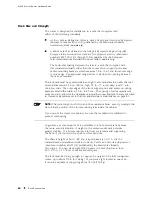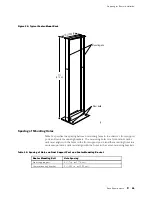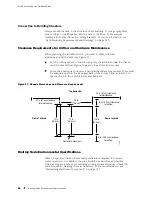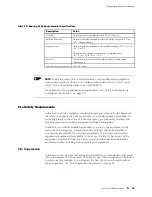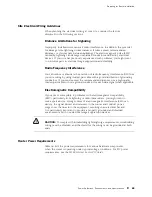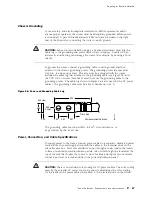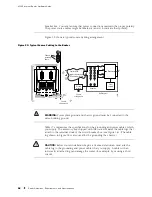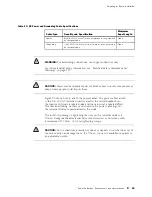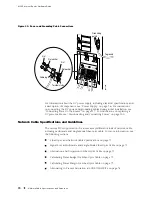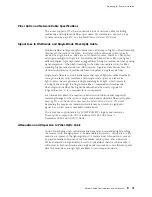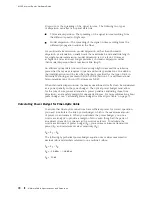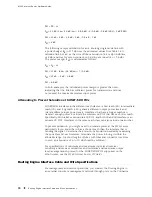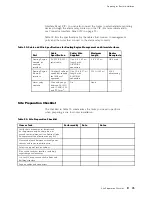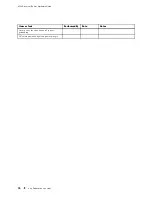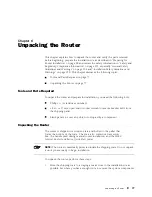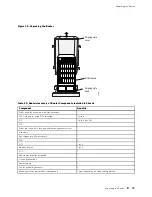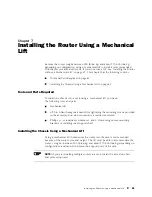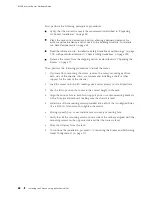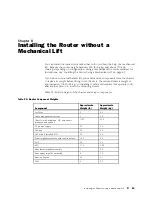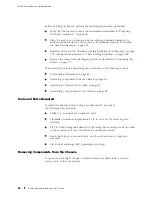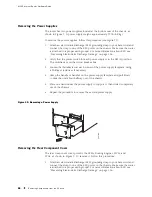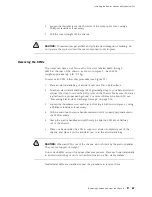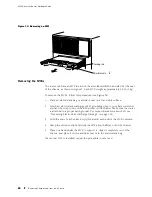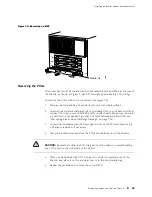
M160 Internet Router Hardware Guide
PM = PB – LL
PM = 13 dB – 2 km (1.0 dB/km) – 5 (0.5 dB) – 2 (0.5 dB) – 0.5 dB [HOL] – 1 dB [CRM]
PM = 13 dB – 2 dB – 2.5 dB – 1 dB – 0.5 dB – 1 dB
PM = 6 dB
The following sample calculation for an 8 km-long single-mode link with
a power budget (
PB
) of 13 dB uses the estimated values from Table 18 to
calculate link loss (
LL
) as the sum of fiber attenuation (8 km @ 0.5 dB/km,
or 4 dB) and loss for seven connectors (0.5 dB per connector, or 3.5 dB).
The power margin (
PM
) is calculated as follows:
PM = PB – LL
PM = 13 dB – 8 km (0.5 dB/km) – 7 (0.5 dB)
PM = 13 dB – 4 dB – 3.5 dB
PM = 5.5 dB
In both examples, the calculated power margin is greater than zero,
indicating that the link has sufficient power for transmission and does
not exceed the maximum receiver input power.
Attenuating to Prevent Saturation at SONET/SDH PICs
SONET/SDH interfaces in the different reach classes—short reach (SR), intermediate
reach (IR), and long reach (LR)—generate different output power levels and
tolerate different input power levels. Interfaces that have a longer reach can
transmit enough power to saturate the receivers on PICs that have a shorter reach.
Specifically, LR interfaces can saturate IR PICs, and both IR and LR interfaces can
saturate SR PICs. Interfaces in the same reach class can also saturate one another.
To prevent saturation, you might need to attenuate power at the PIC receiver,
particularly if you know that it has a shorter reach than the interface that is
sending the signal. Determine the amount of attenuation needed by measuring
the power level at each receiver. Attenuate the power to bring it within the
allowable range; for short lengths of fiber, with fiber and connector loss close
to zero, an attenuator of 5 to 10 dB should be sufficient.
For specifications of minimum and maximum input level (receiver
sensitivity and receiver saturation) and minimum and maximum output
level (average launch power) for the SONET/SDH PICs supported on the
M160 router, see the
M160 Internet Router PIC Guide
.
Routing Engine Interface Cable and Wire Specifications
For management and service operations, you connect the Routing Engine to
an external console or management network through ports on the Connector
74
Routing Engine Interface Cable and Wire Specifications
Summary of Contents for Internet Router M160
Page 12: ...M160 Internet Router Hardware Guide xii Table of Contents ...
Page 16: ...M160 Internet Router Hardware Guide xvi List of Figures ...
Page 18: ...M160 Internet Router Hardware Guide xviii List of Tables ...
Page 24: ...M160 Internet Router Hardware Guide xxiv Requesting Support ...
Page 26: ...2 Product Overview ...
Page 30: ...M160 Internet Router Hardware Guide 6 Safety Requirements Warnings and Guidelines ...
Page 66: ...M160 Internet Router Hardware Guide 42 Cable Management System ...
Page 80: ...M160 Internet Router Hardware Guide 56 Routing Engine Architecture ...
Page 82: ...58 Initial Installation ...
Page 104: ...M160 Internet Router Hardware Guide 80 Unpacking the Router ...
Page 148: ...M160 Internet Router Hardware Guide 124 Configuring the JUNOS Internet Software ...
Page 150: ...126 Hardware Maintenance Replacement and Troubleshooting Procedures ...
Page 242: ...M160 Internet Router Hardware Guide 218 Troubleshooting the Power System ...
Page 244: ...220 Appendixes ...
Page 292: ...M160 Internet Router Hardware Guide 268 Packing Components for Shipment ...
Page 301: ...Part 5 Index Index 277 ...
Page 302: ...278 Index ...

